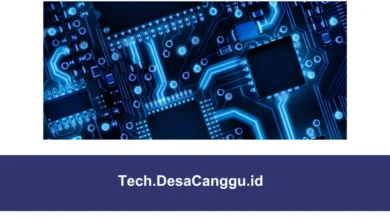Exploring the Future of Data Storage Technology

Data storage technology has come a long way since the days of punch cards, IBM 59H4364, and magnetic tapes. As we continue to generate data at an unprecedented rate, driven by the proliferation of Internet of Things (IoT) devices, artificial intelligence (AI), and large-scale digitalization efforts, the future of data storage technology is both a critical and exciting field to explore. This article delves into the advancements on the horizon and the innovative technologies set to transform data storage.
1. DNA Data Storage
DNA data storage is an emerging technology that leverages the genetic coding system to store vast amounts of data. DNA’s incredible data density means that a single gram of DNA can theoretically hold up to 215 petabytes of data. This technology works by encoding binary data into the four nucleotides of DNA: adenine (A), cytosine (C), guanine (G), and thymine (T).
Pros:
- Extremely high data density.
- Long-term stability (DNA can last thousands of years if stored properly).
Cons:
- High cost and complexity of current synthesis and sequencing processes.
- Slow read/write times compared to electronic storage.
Despite these challenges, ongoing research aims to make DNA data storage more practical and cost-effective, potentially revolutionizing archival storage.
2. Quantum Storage
Quantum data storage exploits the principles of quantum mechanics to store and manipulate data at the quantum level. Quantum bits or qubits, unlike classical bits, can exist in multiple states simultaneously due to superposition, and they can be entangled with each other, providing a significant leap in storage capacity and processing power.
Pros:
- Massive parallelism and potential for exponential data density.
- Enhanced security features due to quantum entanglement.
Cons:
- Currently, in the experimental stage with significant technical challenges.
- Requires extremely low temperatures and stable environments.
Quantum storage holds promise for future applications in quantum computing and secure communication systems, though practical, large-scale deployment remains a challenge.
3. Holographic Data Storage
Holographic data storage uses laser beams to record and read data in three-dimensional patterns within a storage medium. This method enables high data transfer rates and large storage capacities by utilizing the volume of the medium rather than just the surface.
Pros:
- High storage capacity and fast data access.
- Durability and longevity of storage media.
Cons:
- Technological complexity and high cost of implementation.
- Limited commercial availability.
Researchers are working to overcome these barriers, with holographic storage potentially serving high-speed data access needs in industries such as healthcare and entertainment.
4. 5D Optical Storage
5D optical storage technology encodes data in five dimensions within a silica glass medium using femtosecond laser writing. This technique involves three spatial dimensions plus two additional dimensions of size and orientation of the nanostructures created by the laser.
Pros:
- Extremely high data density (up to 360 TB per disc).
- Longevity (potentially billions of years under optimal conditions).
Cons:
- Current read/write processes are slow.
- High cost and technical complexity.
As researchers refine the technology, 5D optical storage could become a viable solution for ultra-long-term archival storage.
5. Neuromorphic Storage
Neuromorphic storage mimics the architecture of the human brain to store and process data. This involves creating artificial synapses and neurons using materials like memristors, which can change their resistance based on previous current flow, effectively “remembering” the data.
Pros:
- Efficient data processing and storage mimicking neural processes.
- Potentially lower power consumption.
Cons:
- Still in the experimental phase with many technical hurdles.
- Integration with existing computing systems is complex.
Neuromorphic storage has the potential to revolutionize how we handle large-scale, complex data processing tasks, particularly in AI and machine learning applications.
Conclusion
The future of data storage technology is poised for exciting developments, with various innovative solutions being explored to meet the ever-growing demand for storage capacity and efficiency. From the biological marvel of DNA storage to the quantum realm, the possibilities are vast. While many of these technologies are still in their infancy or face significant technical and economic challenges, continued research and investment could lead to breakthroughs that redefine our digital landscape. As these technologies mature, they will not only enhance our ability to store and access data but also open new frontiers in computing and data management.



